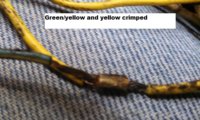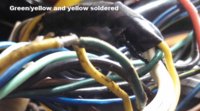Shovel Jockey
Piano Tuna
Out for a ride today on my, to this point, trusty 78E. Blew the main 20A fuse for the first time since I've owned the bike, (4 years and 22K miles). Replaced it with the spare in the holder and it blew 5 seconds after startup. It just so happened to break down in an area where you DO NOT leave your bike unattended on the side of road if you ever want to see it again . Getting desperate I resorted to the old cigarette foil around the fuse trick to get it fired and get the hell out of there. It worked but by the time I got out of no mans land my fuse holder had overheated and melted a degree. I know I have to trace wires to find the problem and replace the fuse holder. My question is do you guys think I may have screwed anything else electrical up with my hillbilly fix?
. Getting desperate I resorted to the old cigarette foil around the fuse trick to get it fired and get the hell out of there. It worked but by the time I got out of no mans land my fuse holder had overheated and melted a degree. I know I have to trace wires to find the problem and replace the fuse holder. My question is do you guys think I may have screwed anything else electrical up with my hillbilly fix?
 . Getting desperate I resorted to the old cigarette foil around the fuse trick to get it fired and get the hell out of there. It worked but by the time I got out of no mans land my fuse holder had overheated and melted a degree. I know I have to trace wires to find the problem and replace the fuse holder. My question is do you guys think I may have screwed anything else electrical up with my hillbilly fix?
. Getting desperate I resorted to the old cigarette foil around the fuse trick to get it fired and get the hell out of there. It worked but by the time I got out of no mans land my fuse holder had overheated and melted a degree. I know I have to trace wires to find the problem and replace the fuse holder. My question is do you guys think I may have screwed anything else electrical up with my hillbilly fix?
 Age? Electrolyte level low (lead acid)?
Age? Electrolyte level low (lead acid)? 
